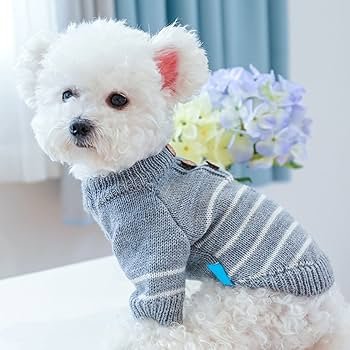Whether you’re searching for “dog photography near me” or planning to capture amazing shots yourself, creating memorable photos of your furry friend doesn’t require expensive equipment or professional training. With the right techniques and creative ideas, you can transform ordinary moments into extraordinary memories that rival the best dog photos you’ve seen online.
Dog photography combines technical skill with patience, timing, and understanding your subject’s personality. From indoor portrait sessions to outdoor adventures, every setting offers unique opportunities to showcase your dog’s character. This comprehensive guide will walk you through proven techniques, creative concepts, and practical tips to elevate your dog photography game.
Table of Contents
- Essential Equipment for Dog Photography
- Indoor Dog Photography Ideas
- Outdoor Dog Photography Concepts
- Best Dog Photos: Technical Settings
- Dog Photography Competition Preparation
- Dog Photography Course Benefits
- Creative Dog Photography Ideas
- Seasonal Photography Opportunities
- Action and Movement Photography
- Portrait Photography Techniques
- Common Photography Mistakes to Avoid
- Editing and Post-Processing Tips

Essential Equipment for Dog Photography {#equipment}
You don’t need a professional studio to capture stunning dog photos. A basic DSLR or mirrorless camera with a fast autofocus system works perfectly for most situations. The key lies in understanding your equipment’s capabilities and limitations.
A 50mm or 85mm lens provides excellent portrait results, while a 24-70mm zoom lens offers versatility for various shooting scenarios. Fast lenses with wide apertures (f/1.4 to f/2.8) create beautiful background blur that makes your dog stand out dramatically.
Smartphone cameras have evolved tremendously, making them viable options for dog photography. Modern phones feature portrait modes, burst shooting, and impressive low-light performance that can produce professional-looking results.
Good lighting equipment includes reflectors, diffusers, and portable LED panels. Natural light remains the most flattering option, but having backup lighting ensures you’re prepared for any situation.
Treats, toys, and squeaky sounds serve as essential tools for capturing attention and expressions. Pack various motivators to keep your dog engaged throughout the session.
A sturdy tripod enables sharp images in low light and helps maintain consistent framing for multiple shots. This becomes especially valuable during golden hour sessions or indoor photography.
Memory cards with fast write speeds prevent missed shots during burst sequences. Dogs move quickly, and camera buffer limitations can cost you the perfect moment.
Lens cleaning supplies are crucial when working with animals. Nose prints, slobber, and outdoor elements can quickly compromise image quality if you’re unprepared.
Comfortable kneepads or a portable seat allow you to shoot at your dog’s eye level for extended periods without physical strain.
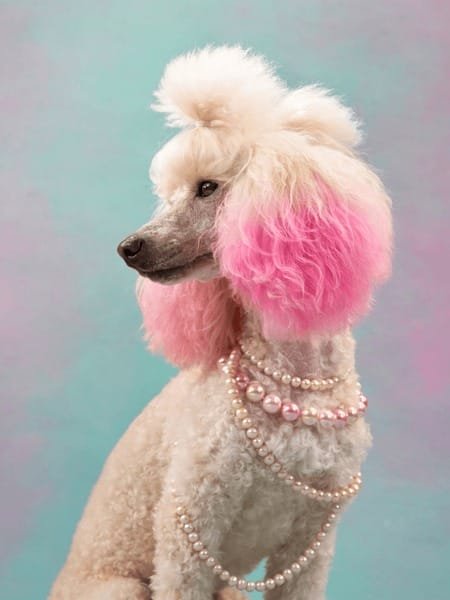
Indoor Dog Photography Ideas {#indoor-ideas}
Indoor dog photography opens up controlled environments where you can manipulate lighting, backgrounds, and settings to create professional-quality images. Your home provides countless opportunities for creative shots that showcase your dog’s personality in familiar surroundings.
Kitchen and dining areas offer excellent opportunities for lifestyle shots. Capture your dog’s mealtime routine, their hopeful expressions during cooking, or candid moments of daily life that tell authentic stories.
Bedroom photography sessions create intimate, cozy atmospheres. Dogs relaxing on beds, peeking out from under blankets, or enjoying lazy morning stretches make heartwarming images that resonate with viewers.
Living room setups allow for environmental portraits that show your dog’s place within your family. Include furniture, family photos, or personal items that add context and emotional depth to the images.
Bathroom sessions might sound unusual, but bath time creates adorable wet dog portraits and action shots of shaking and splashing. The contained environment makes cleanup easier while providing unique photo opportunities.
Staircase photography adds dynamic angles and leading lines to your compositions. Dogs running up or down stairs create motion blur effects that convey energy and playfulness.
Basement or garage spaces with concrete floors and industrial elements provide urban, edgy backdrops for modern dog portraits. Add dramatic lighting for contemporary artistic effects.
Holiday and seasonal decorations transform ordinary indoor spaces into themed photography sets. Christmas trees, Halloween decorations, or birthday party setups create memorable milestone photos.
Play sessions indoors capture authentic joy and energy. Document fetch games, tug-of-war matches, or interactive toy play for genuine expressions that reflect your dog’s personality.
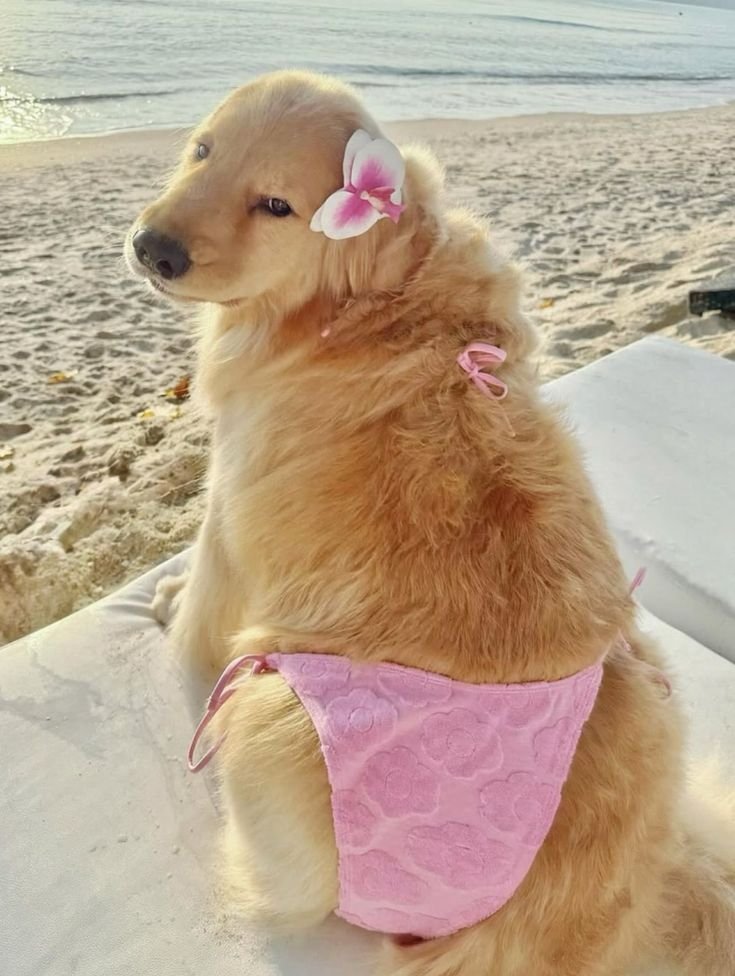
Outdoor Dog Photography Concepts {#outdoor-concepts}
Outdoor environments provide endless possibilities for dynamic dog photography, from natural landscapes to urban settings. Each location offers unique lighting conditions, textures, and backgrounds that can transform ordinary snapshots into extraordinary artistic images.
Parks and open fields create classic outdoor portraits with natural backgrounds. Golden hour lighting in these spaces produces warm, ethereal images that many consider the epitome of the best dog photos. Rolling hills, meadows, and tree lines provide depth and visual interest without overwhelming your subject.
Beach photography combines action and beauty as dogs naturally play in sand and surf. Capture them running through waves, digging in sand, or simply enjoying the ocean breeze. The contrast between wet fur and sparkling water creates visually striking compositions.
Forest and woodland settings offer dappled light filtering through trees, creating natural spotlights and dramatic shadows. Fallen logs, moss-covered rocks, and woodland paths provide props and leading lines that guide viewers’ eyes to your dog.
Urban photography showcases dogs in city environments with architectural backgrounds, colorful murals, and street art. These contrasts between natural subjects and man-made environments create compelling visual narratives.
Mountain and hiking trail photography captures adventure and exploration themes. Dogs navigating rocky terrain, standing on overlooks, or resting during hikes tell stories of companionship and outdoor adventure.
Flower fields and gardens provide colorful, romantic backdrops perfect for spring and summer photography. Dogs surrounded by blooms create magazine-worthy images that celebrate the beauty of nature and companionship.
Snow and winter landscapes offer unique opportunities for dramatic contrast photography. Dark-coated dogs against white snow create striking compositions, while light-colored dogs blend beautifully with winter’s subtle tones.
Sunrise and sunset locations provide magical lighting that transforms ordinary scenes into extraordinary images. Silhouettes, rim lighting, and golden tones create emotional depth that resonates with viewers long after viewing.
Water features like lakes, streams, and ponds offer reflection opportunities and natural drinking poses. Dogs interacting with water create authentic moments that showcase their natural behaviors and instincts.
Seasonal changes in outdoor locations provide year-round photography opportunities. Spring blossoms, summer greenery, autumn colors, and winter textures each offer unique aesthetic possibilities for creative dog photography.

Best Dog Photos: Technical Settings {#technical-settings}
Achieving the best dog photos requires understanding camera settings that accommodate your subject’s unpredictable movement and varying lighting conditions. Mastering these technical aspects separates amateur snapshots from professional-quality images that could win a dog photography competition.
Shutter speed becomes your most important setting when photographing active dogs. Use 1/500th second or faster for running dogs, while 1/250th second works for walking or gentle movement. Slower speeds create intentional motion blur for artistic effects.
Aperture control affects depth of field and background separation. Wide apertures (f/1.4 to f/2.8) create beautiful bokeh that isolates your subject, while narrower apertures (f/5.6 to f/8) keep multiple dogs or environmental elements in focus.
ISO performance varies by camera model, but modern cameras handle ISO 1600-3200 well for indoor and low-light situations. Don’t fear higher ISOs if they allow proper shutter speeds for sharp images – grain can be reduced in post-processing.
Autofocus modes significantly impact your success rate. Continuous autofocus (AI Servo/AF-C) tracks moving subjects, while single-point autofocus provides precision for stationary portraits. Back-button focus separates focusing from the shutter release for better control.
Burst mode captures multiple frames per second, increasing your chances of getting the perfect expression or action moment. Memory card speed becomes crucial here – invest in fast cards to prevent buffer limitations.
Exposure compensation helps balance tricky lighting situations. Dark dogs against bright backgrounds need positive compensation, while light dogs in dark environments require negative compensation to maintain proper exposure.
White balance affects color accuracy and mood. Daylight setting works for most outdoor situations, while shade setting warms up shadowy areas. Custom white balance ensures accurate colors in mixed lighting situations.
Metering modes influence how your camera calculates exposure. Spot metering works well for backlit situations, while evaluative/matrix metering handles most general situations effectively.
Focus points and area selection affect where your camera locks focus. Single-point autofocus provides precision, while zone or tracking modes help with moving subjects across the frame.
Image stabilization helps with handheld shooting but may interfere with panning shots. Learn when to enable or disable this feature based on your shooting style and subject movement.
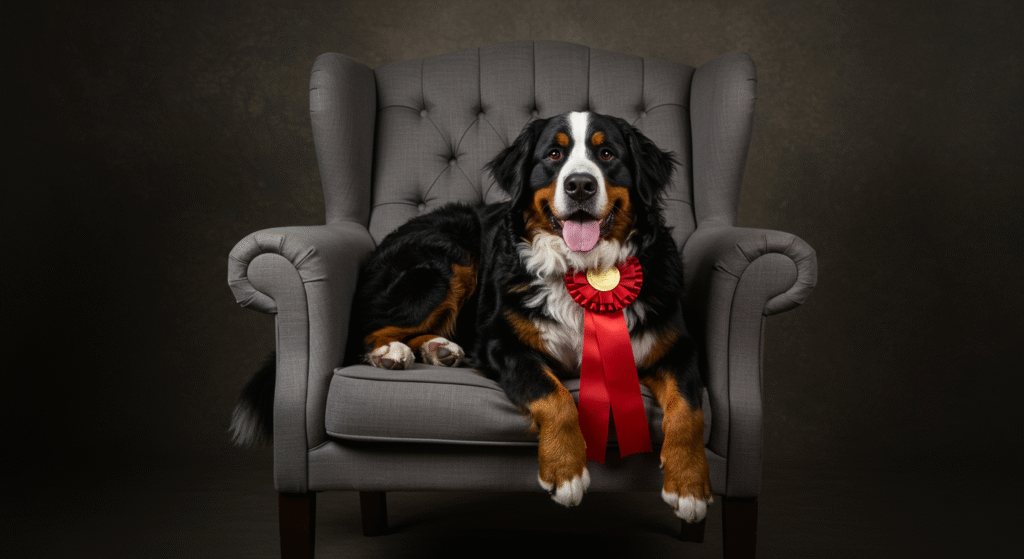
Dog Photography Competition Preparation {#competition-prep}
Entering a dog photography competition requires strategic planning, technical excellence, and creative vision that sets your work apart from thousands of other entries. Understanding competition criteria and judge preferences significantly improves your chances of success.
Research competition categories and themes thoroughly before shooting. Some contests focus on action shots, while others emphasize portraiture or human-animal bonds. Tailor your approach to match specific competition requirements and judging criteria.
Technical perfection becomes non-negotiable in competitive photography. Ensure sharp focus, proper exposure, and clean compositions without distracting elements. Judges quickly eliminate technically flawed images regardless of creative merit.
Storytelling through images creates emotional connections that judges remember. Capture moments that convey personality, relationships, or unique behaviors rather than simple posed portraits.
Post-processing skills can elevate good images to competition-winning quality. Learn professional editing techniques for color correction, contrast enhancement, and selective adjustments that enhance rather than overpower your original vision.
Print quality matters for competitions requiring physical submissions. Invest in professional printing services or high-quality home printers that accurately reproduce your digital work.
Caption writing and image titling influence judges’ perceptions. Craft compelling descriptions that enhance your image’s story without overselling or explaining obvious elements.
Portfolio diversity demonstrates versatility and skill across different situations and subjects. Include various breeds, environments, and photographic styles to showcase your range as a photographer.
Entry strategy involves selecting your strongest work while avoiding oversaturation in any single category. Quality over quantity remains the golden rule for competition success.
Deadline management and submission requirements demand attention to detail. Late entries and incorrect file formats result in automatic disqualification regardless of image quality.
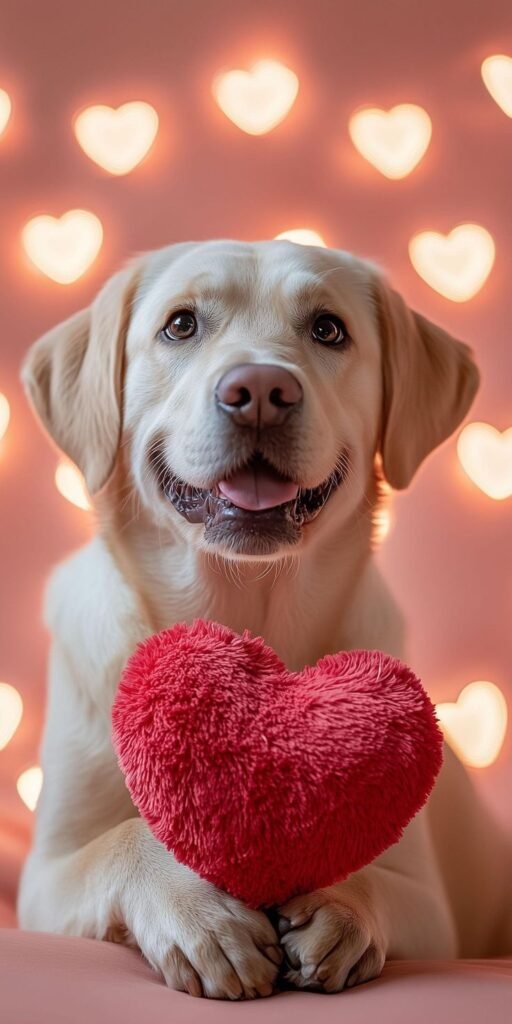
Dog Photography Course Benefits {#course-benefits}
Enrolling in a specialized dog photography course accelerates your learning curve and provides structured guidance from experienced professionals who understand the unique challenges of animal photography. These educational opportunities offer far more value than random online tutorials or trial-and-error learning.
Professional instructors share insider techniques developed through years of experience working with animals. They understand dog behavior, safety considerations, and technical challenges that books and videos cannot adequately address.
Hands-on practice with live subjects allows immediate application of learned concepts under expert supervision. Instructors provide real-time feedback and adjustments that prevent bad habits from forming during your learning process.
Networking opportunities connect you with fellow photographers, potential clients, and industry professionals. These relationships often lead to collaboration opportunities, referral sources, and ongoing mentorship beyond the course duration.
Equipment recommendations from professionals save money and frustration by guiding you toward gear that actually improves your results. Avoid expensive mistakes and unnecessary purchases through expert guidance.
Business aspects of pet photography include pricing strategies, client communication, and marketing techniques that many self-taught photographers struggle to master independently. Professional courses address these crucial business elements.
Safety protocols for working with animals protect both you and your subjects. Learn proper handling techniques, stress recognition, and emergency procedures that ensure positive experiences for everyone involved.
Lighting techniques specific to animal photography address challenges like fur texture, eye reflection, and movement limitations that general photography courses don’t adequately cover.
Legal considerations including model releases, liability insurance, and contract essentials protect your business interests and client relationships from potential complications.
Post-processing workflows optimized for animal photography address specific challenges like fur detail enhancement, eye brightening, and color correction techniques that make your images stand out from amateur efforts.
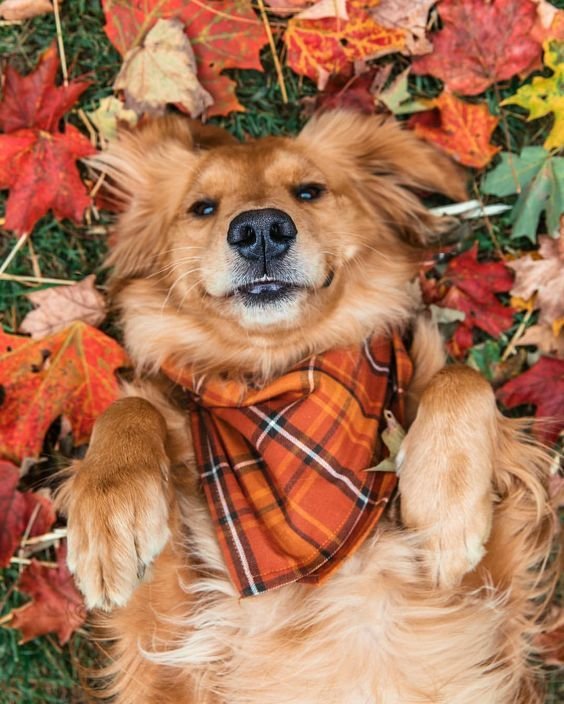
Creative Dog Photography Ideas {#creative-ideas}
Breaking away from traditional dog portraits requires creative vision and willingness to experiment with unconventional techniques, props, and perspectives. These innovative approaches transform ordinary pet photography into artistic expressions that captivate viewers and create memorable images.
Perspective experiments involve shooting from unusual angles that create visual interest and emotional impact. Get down to ground level for dramatic low-angle shots, or photograph from above for unique overhead perspectives that show patterns and relationships.
Multiple exposure techniques combine several images into artistic composites that show movement, time passage, or multiple personalities. This advanced technique creates gallery-worthy art pieces from simple portrait sessions.
Reflection photography uses mirrors, water, or reflective surfaces to create symmetrical compositions or interesting visual effects. Puddles, glass doors, and polished floors offer natural reflection opportunities.
Silhouette photography emphasizes shape and form while creating dramatic, emotional images. Backlit subjects against bright skies or windows create powerful visual statements that focus on essence rather than detail.
Color theming involves coordinating your dog’s accessories, backgrounds, and props around specific color palettes. Monochromatic schemes or complementary color combinations create visually cohesive and professional-looking results.
Texture emphasis highlights the unique qualities of different fur types, from smooth coats to curly, wiry, or long-haired varieties. Close-up detail shots celebrate these distinctive characteristics that make each dog unique.
Environmental storytelling places dogs in settings that reflect their personalities, breeds, or activities. Working dogs in job-related environments, or lap dogs in luxurious settings create authentic narratives.
Double exposure effects blend your dog’s portrait with landscapes, textures, or abstract patterns. This artistic technique creates dreamlike images that combine multiple elements into single, cohesive compositions.
Time-lapse sequences capture growth, training progression, or daily routines through series of images taken over extended periods. These projects document relationships and development over time.
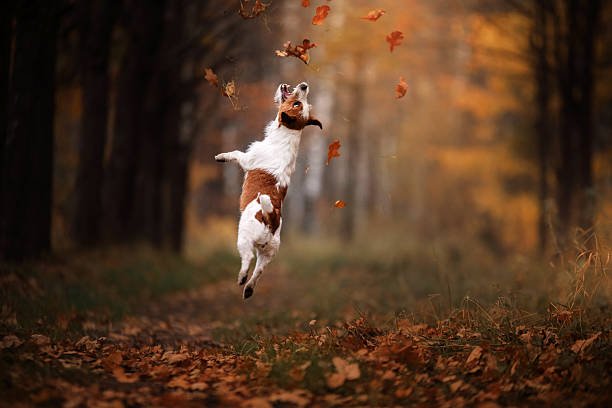
Seasonal Photography Opportunities {#seasonal-shots}
Each season presents unique opportunities for dog photography that celebrate natural cycles and create timely, relevant images throughout the year. Planning sessions around seasonal elements adds variety to your portfolio and creates marketable content for different times of year.
Spring photography capitalizes on blooming flowers, fresh green grass, and comfortable temperatures. Cherry blossoms, tulip fields, and flowering trees provide colorful backdrops that celebrate renewal and growth themes.
Summer sessions offer long daylight hours, vibrant colors, and outdoor activity opportunities. Beach trips, camping adventures, and backyard play sessions capture the carefree spirit of warmer months.
Autumn photography showcases dramatic color changes in foliage and comfortable shooting temperatures. Fallen leaves, harvest decorations, and cozy outdoor settings create warm, nostalgic images perfect for holiday cards.
Winter photography challenges photographers with snow, shorter days, and cold temperatures, but rewards them with unique beauty and dramatic contrast opportunities. Snow-covered landscapes and holiday decorations create magical settings.
Holiday-themed sessions incorporate seasonal decorations, costumes, and traditions into dog photography. Christmas trees, Halloween costumes, and New Year’s celebrations provide timely content for social media and family albums.
Weather phenomenon photography captures dogs experiencing rain, snow, fog, or dramatic skies. These natural elements add atmosphere and emotion to images while showcasing your dog’s adaptability and spirit.
Activity-based seasonal sessions align with typical seasonal activities like hiking, swimming, sledding, or leaf-playing. These authentic interactions create genuine moments that reflect natural seasonal behaviors.
Lighting changes throughout the year affect photography opportunities and moods. Winter’s low sun angles create dramatic lighting, while summer’s high sun requires different approaches and timing considerations.
Clothing and accessory opportunities vary by season, from summer bandanas and sunglasses to winter coats and boots. These elements add personality and practicality while protecting your dog during shoots.
Indoor seasonal photography brings outdoor themes inside when weather doesn’t cooperate. Seasonal decorations, themed props, and creative lighting simulate outdoor seasonal moods in controlled environments.
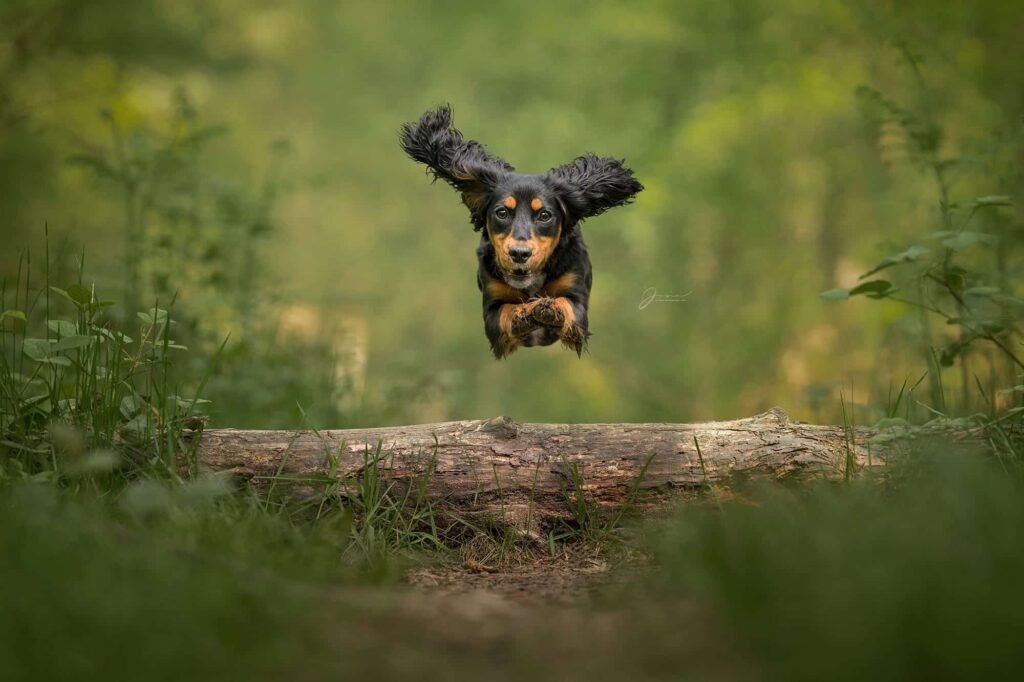
Action and Movement Photography {#action-shots}
Capturing dogs in motion requires technical skill, proper equipment settings, and understanding of canine behavior patterns. These dynamic images often become the most memorable and engaging photos in any dog photography portfolio, showcasing personality and energy that static portraits cannot convey.
Anticipation becomes your greatest asset when photographing moving dogs. Learn to recognize pre-action behaviors like crouching before jumping, focusing before chasing, or the telltale signs of incoming zoomies that signal perfect photo opportunities.
Panning techniques allow you to track moving subjects while maintaining focus and creating dynamic background blur. Practice smooth camera movements that follow your dog’s path while maintaining consistent framing and focus.
Burst mode photography increases your chances of capturing peak action moments. Dogs move unpredictably, and shooting multiple frames per second ensures you don’t miss the perfect expression or body position.
Predictable movement patterns help you prepare for action shots. Dogs running fetch routes, jumping over obstacles, or following familiar paths allow you to pre-focus and position yourself for optimal results.
Freezing motion requires fast shutter speeds that stop action completely. Use 1/1000th second or faster for running dogs, while jumping actions may require even faster speeds to eliminate motion blur entirely.
Motion blur effects create artistic impressions of speed and energy. Intentionally slower shutter speeds combined with steady subjects or panning techniques produce dynamic images that convey movement through visual effects.
Eye-level shooting positions create more engaging action photos than shooting down at moving dogs. Get low and maintain your dog’s eye level throughout the action sequence for more compelling perspectives.
Lighting considerations for action photography often require higher ISOs or wider apertures to maintain fast shutter speeds. Accept slight grain or shallow depth of field to ensure properly frozen motion.
Background awareness becomes crucial during action photography as moving subjects may enter cluttered or distracting areas. Scout locations beforehand and position yourself for clean backgrounds throughout the anticipated action zone.
Safety considerations protect both photographer and subject during action sessions. Maintain safe distances from high-energy play, avoid obstacles that could cause injury, and ensure your dog remains hydrated and comfortable throughout extended sessions.
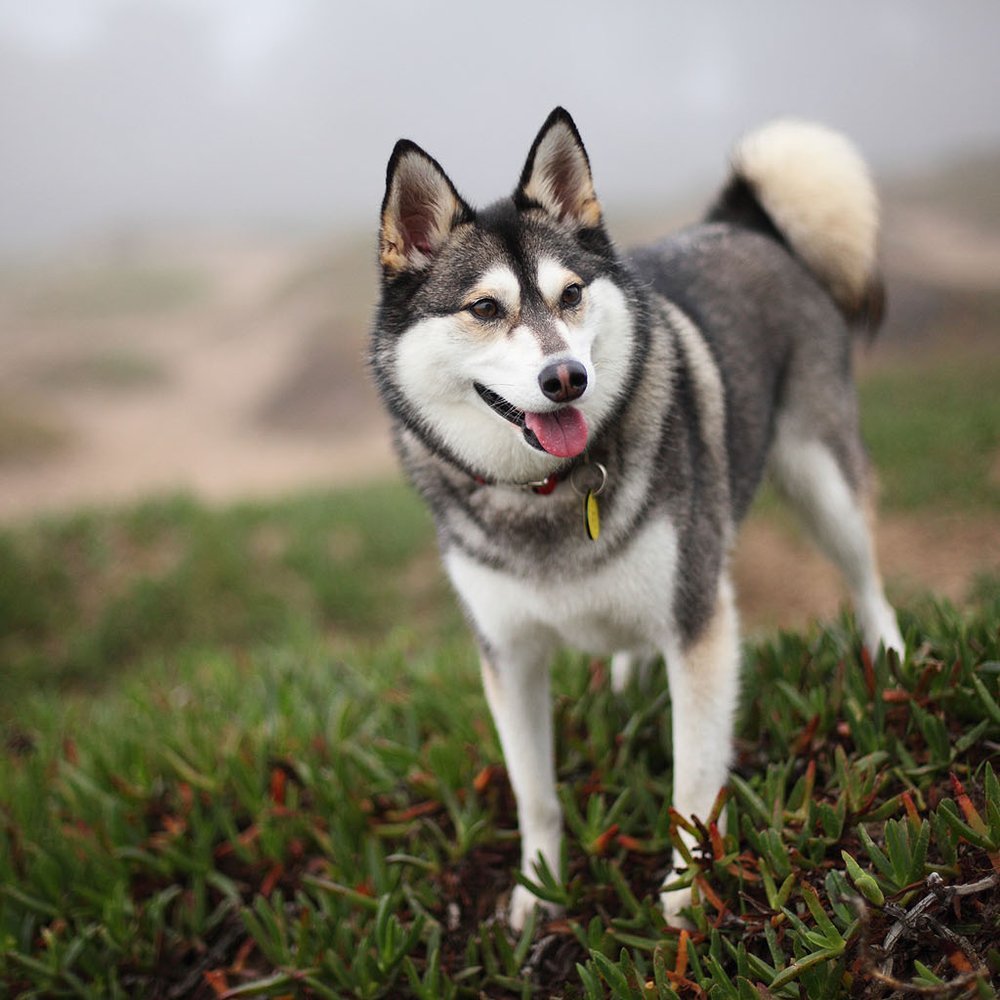
Portrait Photography Techniques {#portrait-techniques}
Dog portraiture requires different approaches than human photography due to anatomical differences, attention span limitations, and behavioral considerations. Mastering these specialized techniques creates professional-quality portraits that capture personality and character in compelling ways.
Eye contact creates immediate connection between subject and viewer, making it the most critical element in successful dog portraits. Use treats, toys, or sounds positioned near your lens to direct attention where you need it most.
Depth of field control isolates your subject from busy backgrounds while maintaining sharp focus on critical areas like eyes and facial expressions. Wide apertures create beautiful bokeh while ensuring your dog remains the clear focal point.
Lighting patterns for dog portraits must accommodate fur texture, facial structure, and eye placement differences between breeds. Soft, diffused lighting works well for most dogs, while dramatic lighting suits certain breeds and artistic visions.
Posing techniques for dogs differ significantly from human posing. Work with natural behaviors and comfortable positions rather than forcing unnatural poses that create stress or awkward body language.
Background selection impacts portrait success dramatically. Simple, uncluttered backgrounds focus attention on your subject, while environmental portraits include meaningful elements that tell stories about your dog’s personality or lifestyle.
Timing considerations acknowledge dogs’ limited attention spans and energy cycles. Schedule sessions during your dog’s most alert and cooperative periods, typically after exercise but before meal times.
Expression coaching involves using sounds, movements, and rewards to elicit desired expressions and head tilts. Develop a repertoire of attention-getting techniques that produce consistent results.
Crop and framing choices affect emotional impact and visual flow. Close-ups emphasize facial expressions and eyes, while wider shots include body language and environmental context that adds storytelling elements.
Series shooting captures multiple expressions and poses during single sessions. Dogs’ expressions change rapidly, and continuous shooting ensures you capture the full range of personality traits and moods.
Post-processing techniques for dog portraits include eye enhancement, fur detail sharpening, and color adjustments that flatter your specific subject. Learn to enhance rather than over-process for natural, appealing results.
| Photography Idea | Description | Best Setting |
|---|---|---|
| Golden Hour Portraits | Soft, warm lighting during sunrise/sunset | Open fields, beaches, parks |
| Action Splash Shots | Dogs playing in water with dramatic splashing | Lakes, dog beaches, pools |
| Seasonal Flower Fields | Dogs surrounded by blooming flowers | Botanical gardens, wildflower meadows |
| Urban Street Photography | Dogs in city environments with architectural backgrounds | Downtown areas, colorful murals |
| Lifestyle Home Shots | Candid moments of dogs in their daily routines | Living rooms, kitchens, bedrooms |
| Winter Snow Adventures | Dogs playing in snow with high contrast | Snow-covered parks, mountainsides |
| Studio Portrait Style | Controlled lighting with seamless backgrounds | Home studio setup, garage |
| Adventure Hiking Shots | Dogs on trails with scenic mountain views | National parks, hiking trails |
| Beach Silhouettes | Dramatic backlighting creating dog silhouettes | Ocean beaches during sunset |
| Holiday Themed Photos | Dogs with seasonal decorations and costumes | Home with holiday decorations |
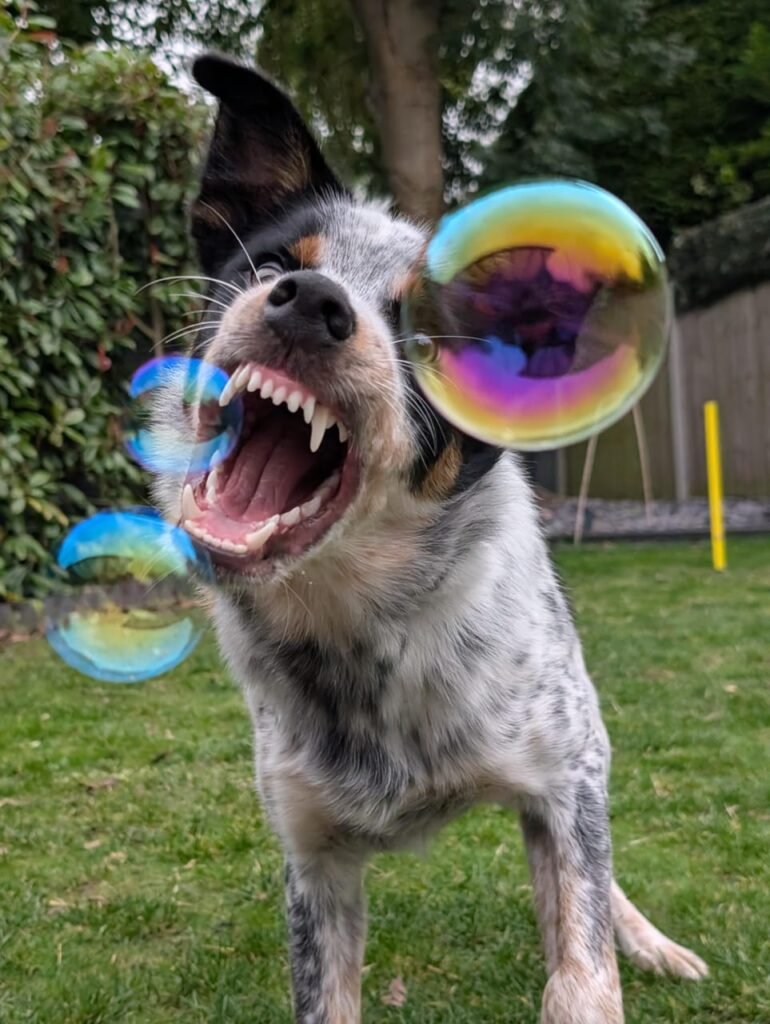
Common Photography Mistakes to Avoid {#mistakes}
Learning from common mistakes accelerates your improvement and prevents frustration during your dog photography journey. These frequent errors plague both beginners and experienced photographers who haven’t adapted their human photography skills to animal subjects.
Focus errors occur when cameras lock onto backgrounds, noses, or other elements instead of eyes. Always prioritize eye sharpness, as viewers instinctively look at eyes first in any portrait. Use single-point autofocus for precise control over focus placement.
Poor timing results in closed eyes, awkward expressions, or missed peak action moments. Learn your dog’s behavioral patterns and anticipate expressions rather than hoping to catch them randomly through continuous shooting.
Distracting backgrounds pull attention away from your subject and create cluttered compositions. Survey your entire frame before shooting, not just your dog, and adjust positioning to eliminate problematic elements.
Inappropriate lighting creates unflattering shadows, harsh contrasts, or color casts that diminish image quality. Avoid direct overhead sun, which creates raccoon eyes, and learn to recognize and work with quality light sources.
Over-processing in post-production creates unnatural-looking images that lose authenticity and emotional impact. Enhance your photos subtly rather than applying heavy filters or dramatic adjustments that overshadow your subject.
Safety negligence puts dogs at risk during photography sessions. Never prioritize getting a shot over your pet’s wellbeing, and always consider environmental hazards, temperature extremes, and stress levels during shoots.
Equipment limitations aren’t always the problem – understanding your current gear’s capabilities often produces better results than constantly upgrading. Learn to maximize your existing equipment before investing in expensive additions.
Patience deficits lead to rushed sessions that produce mediocre results and stressed animals. Allocate adequate time for breaks, treats, and allowing your dog to acclimate to new environments or setups.
Composition mistakes include centering every subject, ignoring rule of thirds, and failing to use leading lines or natural framing elements. Study basic composition principles and apply them thoughtfully to your dog photography.
Unrealistic expectations create disappointment and frustration when results don’t match professional work immediately. Photography skills develop over time through practice, experimentation, and learning from both successes and failures.
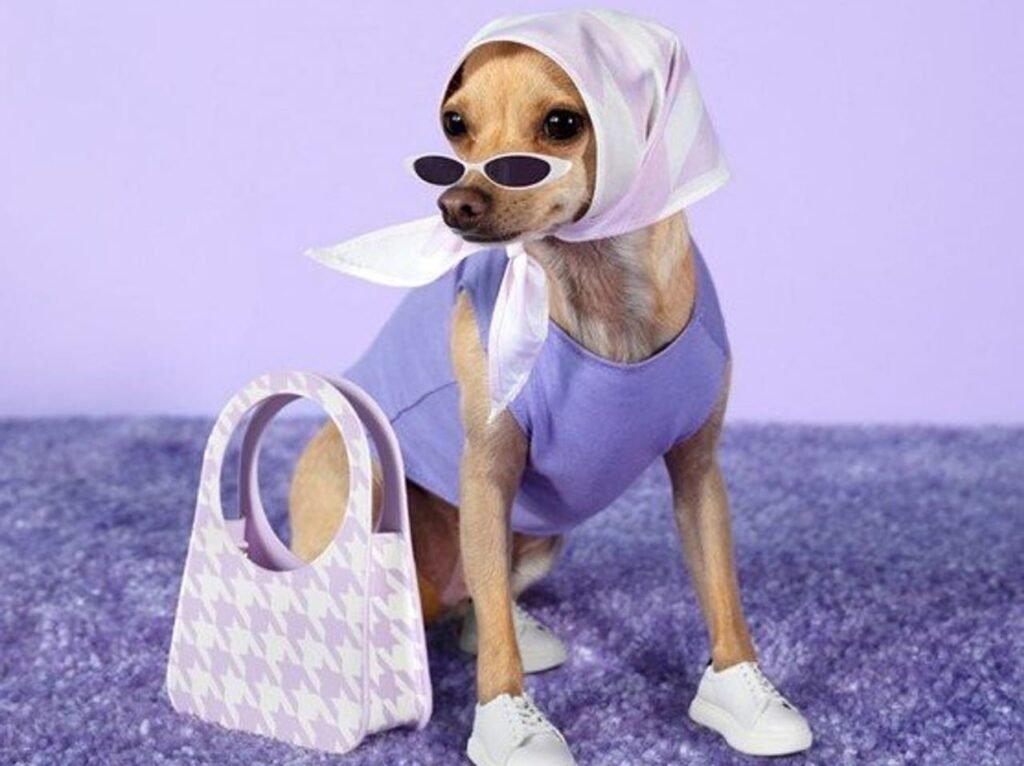
Editing and Post-Processing Tips {#editing-tips}
Post-processing transforms good dog photos into exceptional images that capture attention and create emotional connections with viewers. These techniques enhance your original captures while maintaining natural authenticity that celebrates your subject’s true character and personality.
Basic adjustments form the foundation of professional image editing. Start with exposure correction, highlights and shadows recovery, and white balance adjustment before moving to more creative enhancements. These fundamental corrections establish proper tonal range and color accuracy.
Eye enhancement techniques make dog portraits more compelling and engaging. Brighten eyes slightly, increase clarity around the iris, and remove any red-eye effects caused by flash photography. Subtle adjustments create dramatic improvements without appearing over-processed.
Fur detail enhancement brings out texture and dimension in coat patterns and colors. Use masking techniques to selectively sharpen fur while avoiding skin areas and backgrounds. This targeted approach maintains natural appearance while improving fine detail visibility.
Color grading establishes mood and artistic vision through strategic color adjustments. Warm tones create cozy, intimate feelings, while cooler tones suggest energy or modern aesthetics. Maintain color accuracy while enhancing emotional impact through subtle shifts.
Background cleanup removes distracting elements that weren’t noticed during shooting. Use healing and cloning tools to eliminate litter, leashes, or other unwanted objects that detract from your main subject’s impact.
Noise reduction becomes important for higher ISO images taken in low light conditions. Modern software provides excellent noise reduction capabilities, but avoid over-smoothing that eliminates important fur texture and detail.
Selective editing allows different adjustments to various image areas. Brighten your dog’s face while darkening busy backgrounds, or enhance fur texture while softening harsh lighting transitions for more professional-looking results.
Export settings determine final image quality for different uses. High-resolution files for printing require different compression than social media images. Understanding proper export settings ensures optimal quality for each intended purpose.
Workflow organization keeps your editing process efficient and consistent. Develop standardized approaches for common adjustments and save presets for frequently used effects. Consistent workflow improves both quality and productivity.
Backup strategies protect your edited work from loss or corruption. Maintain multiple copies of both original files and edited versions across different storage devices or cloud services to ensure your hard work remains secure.
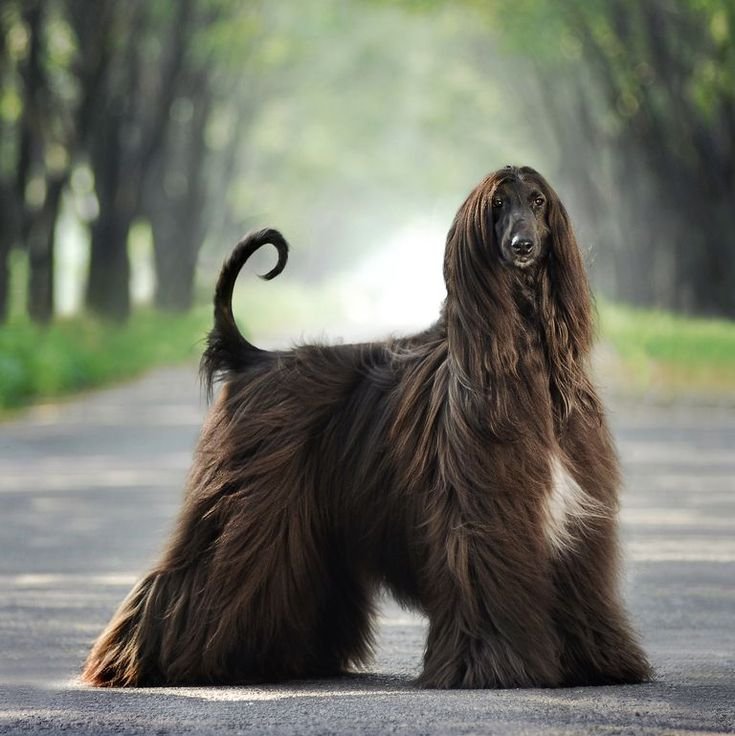
Frequently Asked Questions
Which dog is best for home photography?
Every dog can be photographed beautifully at home, but certain breeds and temperaments make the process easier. Calm, food-motivated dogs like Golden Retrievers, Labradors, and Cavalier King Charles Spaniels typically cooperate well during indoor sessions. However, high-energy breeds can create dynamic action shots that showcase personality. The key lies in working with your individual dog’s temperament rather than expecting them to conform to specific poses. Patient, treat-motivated dogs allow for longer sessions and more controlled compositions, while energetic breeds excel in candid, lifestyle photography that captures their natural enthusiasm and movement.
How to take good photos of dogs?
Taking good dog photos requires patience, preparation, and understanding your subject’s behavior. Start at your dog’s eye level for more engaging perspectives, and ensure their eyes are sharp and well-lit. Use treats and toys to direct attention toward your camera, and shoot in burst mode to capture multiple expressions quickly. Natural lighting works best – position near windows for indoor shots or schedule outdoor sessions during golden hour. Keep sessions short to maintain your dog’s interest, and reward good behavior with treats and praise. Most importantly, let your dog’s personality shine through rather than forcing unnatural poses.
What camera settings work best for dog photography?
Optimal camera settings depend on your shooting situation, but general guidelines include using fast shutter speeds (1/250th or faster) to freeze movement, wide apertures (f/2.8-f/4) for background separation, and continuous autofocus for moving subjects. ISO 400-800 works well for outdoor shooting, while indoor photography may require 1600-3200. Shoot in RAW format for maximum editing flexibility, and use burst mode to capture multiple frames of quickly changing expressions. Back-button focus separates focusing from shutter release, giving you better control over timing. Adjust these settings based on lighting conditions and your dog’s activity level.
When is the best time to photograph dogs?
The best time for dog photography depends on your individual pet’s energy cycles and daily routine. Many dogs are most alert and cooperative after exercise but before meal times. Golden hour (first hour after sunrise or last hour before sunset) provides the most flattering natural lighting for outdoor sessions. Avoid midday harsh sun that creates unflattering shadows. Indoor sessions work well during times when your dog is naturally calm but alert. Consider your dog’s age – puppies and senior dogs may have different optimal energy periods. Schedule sessions when your dog is comfortable and you have adequate time without rushing.
What treats work best during dog photography sessions?
High-value treats that your dog finds irresistible work best for maintaining attention during photography sessions. Small, soft treats that can be eaten quickly prevent long chewing breaks that interrupt shooting flow. Freeze-dried liver, small training treats, or pieces of cooked chicken work well for most dogs. Avoid treats that create messy faces or require extensive chewing. Some dogs respond better to toys or squeaky sounds than food rewards. Experiment beforehand to identify what motivates your specific dog most effectively. Keep treats easily accessible but hidden from view to prevent constant begging behavior that distracts from natural expressions.
How do I get my dog to look at the camera?
Getting your dog to look at the camera requires strategic use of sounds, movements, and rewards positioned near your lens. Hold treats or toys just above your camera to direct their gaze where you need it. Squeaky toys, clicking sounds, or unusual noises often trigger head tilts and attentive expressions. Work with an assistant who can create attention-getting sounds while you focus on camera operation. Avoid overusing attention-getting techniques that may lose effectiveness through repetition. Some dogs respond better to their owner’s voice than stranger’s sounds. Practice these techniques during non-shooting times to understand what works best for your individual dog.
How can I make my dog photography business successful?
Building a successful dog photography business requires combining technical skills with strong customer service and marketing strategies. Develop a distinctive style that sets your work apart from competitors, and build a portfolio showcasing various breeds and situations. Network with veterinarians, pet stores, and dog trainers for referral opportunities. Use social media effectively to showcase your work and connect with potential clients. Price your services appropriately for your market and experience level. Provide excellent customer service that encourages repeat business and positive reviews. Consider specializing in specific niches like rescue organizations, show dogs, or memorial photography. Continuously improve your skills through education and practice.
What safety considerations are important during dog photography sessions?
Safety should always be your top priority during dog photography sessions. Never put dogs in dangerous situations for the sake of getting a shot. Watch for signs of stress, overheating, or exhaustion, and take frequent breaks. Secure shooting locations away from traffic, toxic plants, or other hazards. Bring fresh water and shade for outdoor sessions, especially in warm weather. Understand basic dog body language to recognize when a dog is uncomfortable or anxious. Have emergency contact information for the nearest veterinary clinic. Use positive reinforcement techniques rather than force or intimidation. Ensure proper insurance coverage for your business and consider requiring health certificates for unfamiliar dogs.
How do I handle difficult or uncooperative dogs during photo shoots?
Patience and flexibility are essential when working with challenging dogs. Start sessions slowly, allowing dogs to acclimate to new environments and equipment. Use high-value rewards and positive reinforcement to create positive associations with the photography process. Take frequent breaks to prevent stress and maintain cooperation. Modify your shooting plan based on the dog’s comfort level rather than forcing predetermined concepts. Sometimes the most authentic and beautiful photos come from working with a dog’s natural behavior rather than against it. Consider rescheduling if a dog is having an particularly stressful day. Build relationships with dogs before intensive shooting sessions, and always prioritize their wellbeing over getting specific shots.
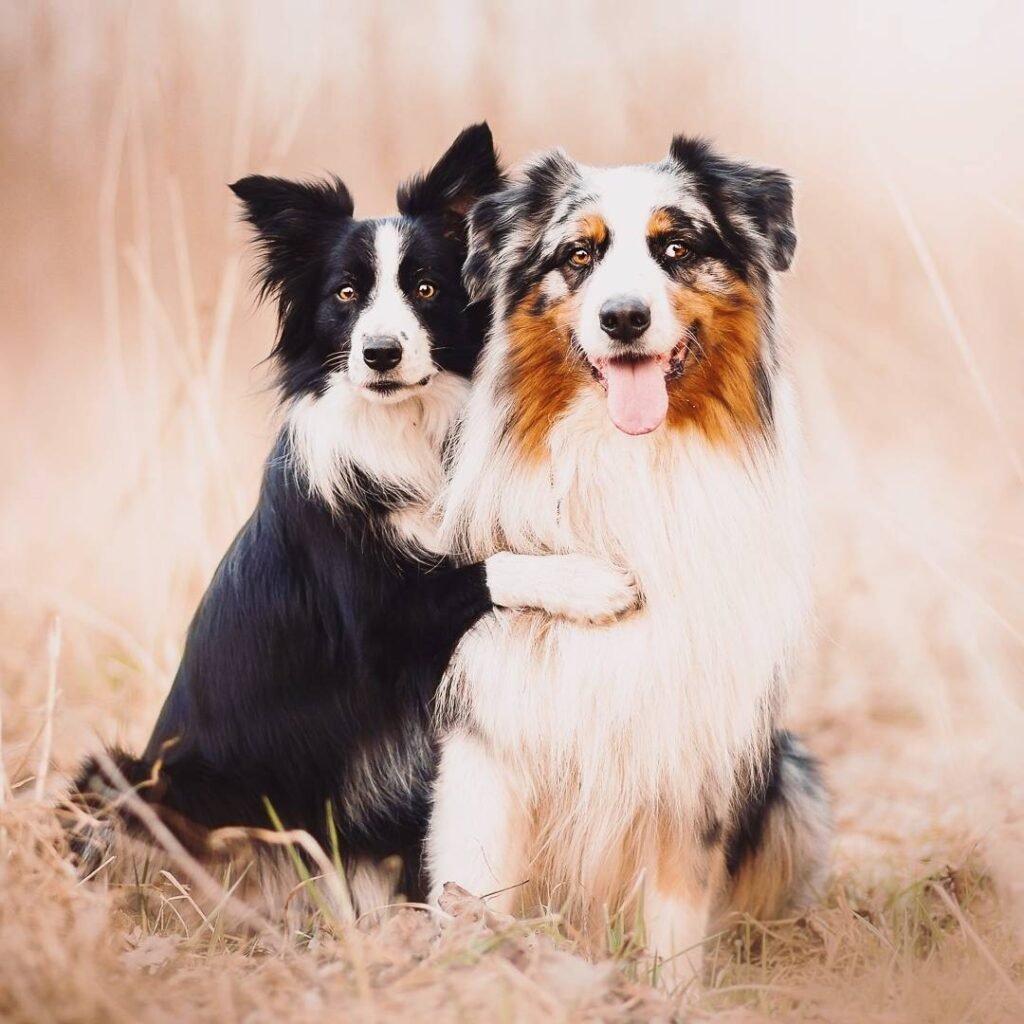
Conclusion
Mastering dog photography combines technical knowledge, creative vision, and genuine love for our four-legged subjects. Whether you’re preparing for a dog photography competition, considering a dog photography course, or simply want to capture better memories of your beloved pet, the techniques and ideas outlined in this guide provide a comprehensive foundation for success.
Remember that the best dog photos come from patience, practice, and understanding your subject’s unique personality. Every dog has distinctive characteristics that make them photogenic in their own way – your job as a photographer is to discover and highlight these special qualities through thoughtful composition, lighting, and timing.
Start with simple techniques and gradually incorporate more advanced concepts as your skills develop. Focus on creating authentic moments that celebrate the joy, loyalty, and unconditional love that dogs bring to our lives. With dedication and practice, you’ll soon be creating stunning images that not only document memories but tell compelling stories that touch hearts and inspire others.
